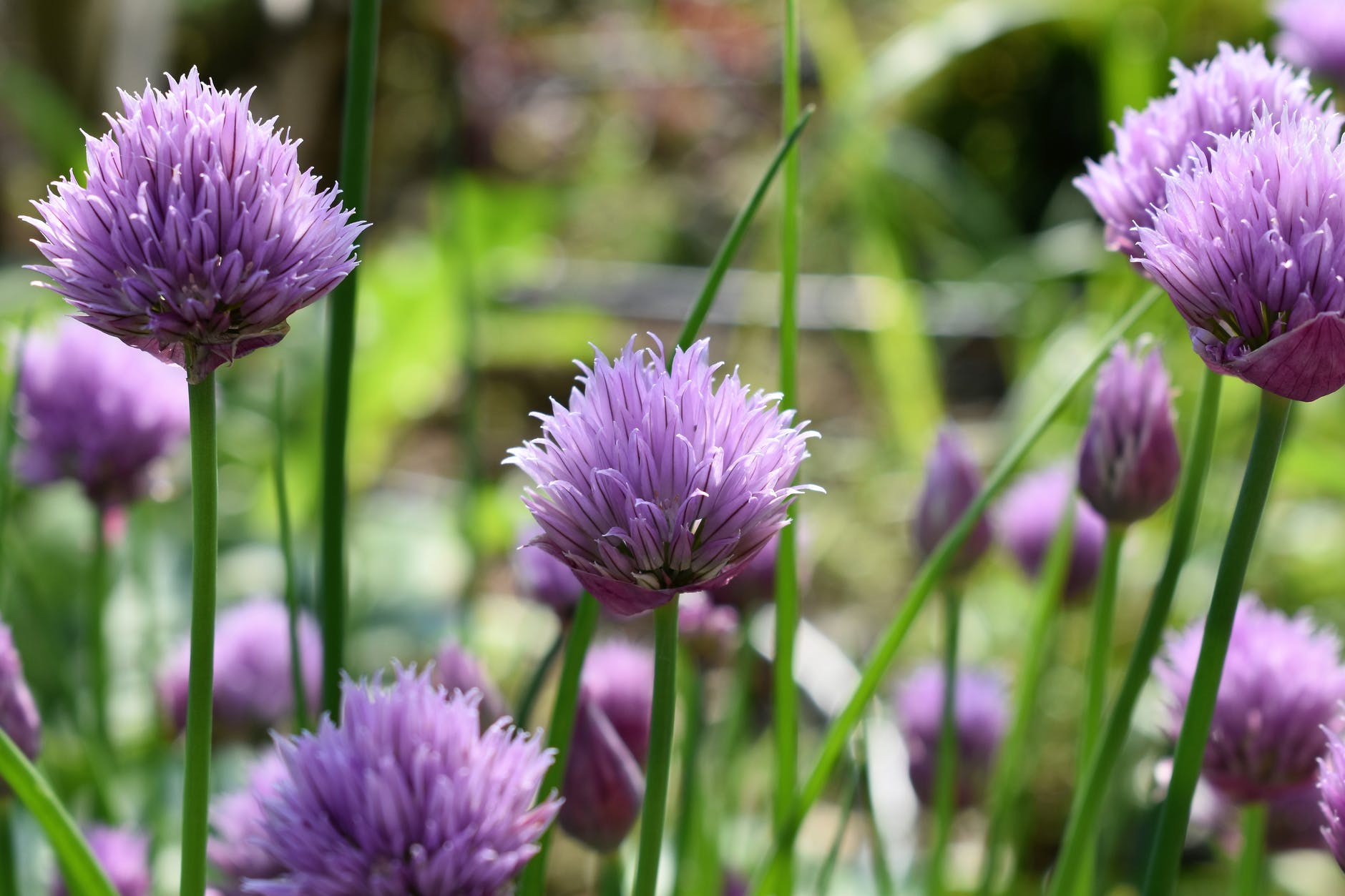
Photo by Pixabay on <a href="https://www.pexels.com/photo/aromatic-bloom-blooming-blossom-533297/" rel="nofollow">Pexels.com</a>
The choice of garden plants should be carefully considered. Not every plant is suitable for the same season, purpose, and location. Planting different flowers in one pot is the easiest way to revitalize a new garden. When planting, remember to choose the right pot so the plant will not dry out too quickly. Also, mix long-lasting plant food into the soil. Here are some useful tips and ideas for what you can plant in your garden all year round.
- Chives
No garden is complete without something to eat! The feeling of being able to get your own spices from the garden is simply unbeatable. Chives are at the top of the list of herbs that should not be missing from your garden. These herbs grow very well in most conditions, including dry rocks, and in a muddy garden surface. Chives can be fried in butter and seasoned with salt for a tasty treat. If you don’t want to eat the flowers, you can also pick them and put them in a vase. Additionally, you can simply sow chives or buy the ready plant in a pot.
- Forest strawberries
Another must-have among the edible plants in the garden is strawberries. These can easily be planted in various beds, preferably elevated and in places where people often pass, for example, near your entrance way or on a terrace. If you have kids, put the strawberries in a kid-friendly spot.
- Mint and Oregano
Other great spices for the herb garden include mint and oregano. Both give off a wonderful fragrance, and oregano, in particular, attracts insects and butterflies when in bloom. However, it is important to remember that these herbs like to spread and completely take over a bed they share with other plants. Therefore, plant them in places where they are allowed to spread or put them in pots.
- Annual flowers
For your annual flowers, a large pot allows you to keep a bigger part of the soil when you change the plant. Just remember to fertilize the soil with new nutrients and provide good drainage so water can drain away if there is too much of it. If you intend to put the pot outside in winter, it must also be able to withstand frost so that it does not crack. When the season for these annual flowers is over, always try to plant them in an empty bed.
- Perennials
Perennials are plants that can give you many years of pleasure. Common to all perennials is that they die back in the fall and return in the spring. A common mistake many people make is to remove perennials in the spring, thinking the plant has died over the winter. Perennials only rest during this time and gather energy for the new season! So be a little careful with spring cleaning. If you feel like you could benefit from professional assistance with your perennials, it’s a good idea to contact local experts such as MasterScapes lawn care and landscaping for help. The lifespan of a perennial varies in different parts of the country and depends on the climate and other conditions. Also, some plants may survive a winter or two and then die if conditions get too harsh.
- Reb-barked dogwood
Ornamental shrubs are stable pillars in the garden. Often, once planted in a suitable spot, they require little maintenance. A garden favorite is the red-barked dogwood. It is quite discreet in summer, with light green leaves and light yellow-white flowers. It becomes spectacular in autumn when the leaves fall and the red branches shine in the barren autumn garden.
- Alpine currant
Another wonderful ornamental shrub is the alpine currant. The nice thing about this plant is that it is one of the first to turn green in spring. When you see the alpine currant’s light green leaves almost exploding, you know spring is coming. The bush can be pruned quite heavily, making it denser and creating a good privacy screen. Therefore, the alpine currant can be used quite well as a hedge, and cropping gives you control over how tall and wide you want it to be.
- Chokeberry
Another rewarding shrub that you can plant either as a hedge or as a bush is the chokeberry. This shrub has dark green leaves and black berries in fall, which are very useful! They are a little acidic but are great for making juice or jam.
- Daffodil
Bulbs planted in the fall bring life to the garden in the spring. The first splashes of color in the garden brighten up each day. A firm favorite bulbous plant is the daffodil. The reason is simple – it’s the perfect spring flower with a long lifespan and blooms regularly every year.
Daffodils can be planted in beds, pots, or directly on the lawn and come in many beautiful colors. With daffodils and all other bulbous plants, the only thing to remember is to always leave the leaves on the plant until they wither. This returns energy and nutrients to the bulb and gives the flowers the strength to bloom again next year.


